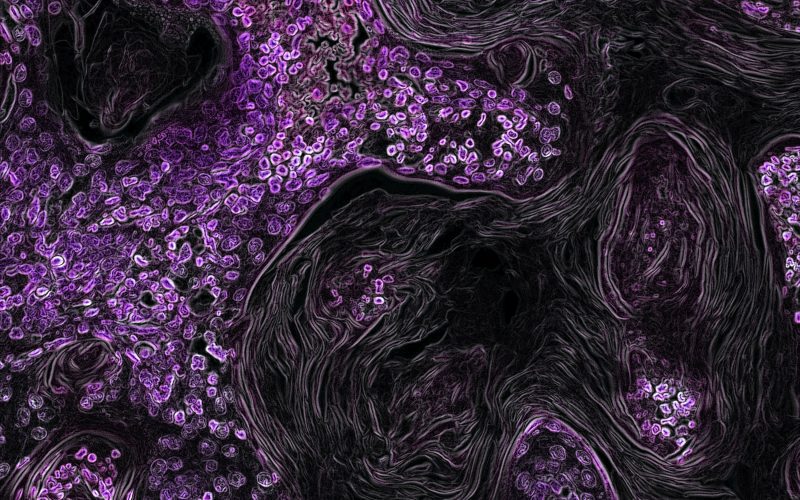Cancer treatment is a complex and often risky procedure, with many types of treatments employed to manage its effects. Radiotherapy (or radiation therapy) is one such treatment that has seen great success in recent years. It has become an invaluable tool in the arsenal of cancer therapies available to patients, offering significant benefits in managing and treating the disease. In this blog post, we will explore the basics of radiotherapy, its benefits in treating cancer cells, and how it works alongside other treatments. We will also discuss how radiotherapy can be a useful and beneficial part of any cancer patient’s overall treatment plan.
What is radiotherapy?
Radiotherapy is a cancer treatment that uses high energy waves or particles to kill cancer cells. It can be used alone or in combination with other cancer treatments, such as surgery, chemotherapy, and/or immunotherapy. Radiotherapy can be delivered externally (from a machine outside of the body) or internally (from radioactive material placed inside the body).
Radiotherapy is an effective treatment for many types of cancer. It works by damaging the DNA of cancer cells, which prevents them from growing and dividing. Radiotherapy can kill cancer cells or stop them from growing and dividing. When used in combination with other cancer treatments, it can increase the chances of successful treatment.
There are different types of radiotherapy, depending on the area being treated and the type of cancer:
-External beam radiation therapy: A machine directs radiation at the cancer from outside the body. This is the most common type of radiation therapy.
-Internal beam radiation therapy: Radiation is directed at the cancer from inside the body. This type of radiation therapy is also called brachytherapy.
-Systemic radiation therapy: Radiation is taken by mouth or injected into a vein and travels through the bloodstream to reach all areas of the body where there may be cancer cells. Systemic radiation therapy is also called whole-body irradiation.
How does radiotherapy work?
Radiotherapy is one of the most common methods of cancer treatment, and it can be used to manage a wide range of cancer patients. In general, radiotherapy works by using high-energy waves to destroy cancer cells. The waves can be delivered using different types of equipment, and the type of equipment that is used will depend on the specific type of cancer being treated.
There are two main types of radiotherapy: external beam radiotherapy and internal beam radiotherapy. External beam radiotherapy is the most common type of radiotherapy, and it involves delivering the high-energy waves from an outside source. Internal beam radiotherapy involves placing the radiation source inside the body, near the cancer cells.
Radiotherapy can be used as a primary treatment for cancer, or it can be used in combination with other treatments, such as surgery or chemotherapy. When used as a primary treatment, radiotherapy is typically given over a period of several weeks. When used in combination with other treatments, radiotherapy is usually given over a shorter period of time.
The side effects of radiotherapy vary depending on the type and location of cancer being treated, as well as the individual patient’s response to treatment. Common side effects include fatigue, skin reactions, and hair loss. More serious side effects are rare but can include organ damage and secondary cancers.
Types of radiotherapy
There are two types of radiotherapy: external beam radiotherapy (EBRT) and internal beam radiotherapy (IBRT). EBRT uses a machine to direct radiation at the cancer from outside the body. IBRT involves placing radioactive material directly into the tumor.
EBRT is the most common type of radiotherapy. It can be used to treat almost any type of cancer. IBRT is usually only used to treat cancers in specific parts of the body, such as the head, neck, or pancreas.
Both types of radiotherapy can be given in different ways, depending on the size and location of the tumor:
- 3-dimensional conformal radiation therapy (3D-CRT): Radiation beams are shaped to match the three-dimensional (3D) shape of the tumor. This allows for a higher dose of radiation to be targeted at the tumor while minimizing exposure to surrounding healthy tissues.
- Intensity modulated radiation therapy (IMRT): Radiation beams are precisely targeted and their intensity can be varied. This allows for an even higher dose of radiation to be targeted at the tumor while minimizing exposure to surrounding healthy tissues. IMRT is often used for tumors located close to sensitive organs, such as those in the head or neck region.
- Image guided radiation therapy (IGRT): Imaging technology is used during treatment delivery to ensure that the cancer receives the correct dose of radiation while healthy tissues are spared. I
Benefits of radiotherapy
There are many benefits of radiotherapy when it comes to managing cancer patients’ treatment. This type of therapy can be used to target specific areas of the body while sparing healthy tissue, making it an effective way to manage cancerous growths. Additionally, radiotherapy can be used in conjunction with other treatments such as surgery or chemotherapy to provide a more comprehensive approach to care.
Radiotherapy can also be used as a palliative measure to help control pain and other symptoms associated with cancer. In some cases, it may even be possible to use radiotherapy to shrink tumors prior to surgery, making the procedure less invasive and reducing the risk of complications. Overall, radiotherapy is a versatile tool that can offer many benefits for cancer patients.
Dr. Gil Lederman Radiosurgery Cancer Treatment Centre
Radiation therapy, also called radiotherapy, is a cancer treatment that uses high-energy beams to kill cancer cells. The most common type of radiation therapy is external beam radiation therapy, which delivers the radiation from a machine outside the body.
Radiation therapy can be used to treat many types of cancer, including brain tumors, lung cancer, breast cancer, and cervical cancer. It can be used as the primary treatment for some cancers or in combination with other treatments such as surgery or chemotherapy.
There are many benefits to radiation therapy. It is often used when a tumor is too large to be removed surgically or when surgery is not an option. Radiation therapy can also be used to shrink a tumor before surgery. This may make it possible to remove the tumor with less damage to surrounding healthy tissue.
Radiation therapy can be an effective treatment for cancer with few side effects. Most side effects are temporary and go away after treatment ends. Common side effects include fatigue, skin irritation, and hair loss. More serious side effects are rare but can include problems with the heart, lungs, or kidneys.
The Dr. Gil Lederman Radiosurgery Cancer Treatment Centre offers state-of-the-art technology and care for patients undergoing radiation therapy. The Centre is equipped with two linear accelerators, each capable of delivering high doses of radiation with pinpoint accuracy. This allows our team of experienced radiation oncologists to tailor each patient’
When is radiotherapy used?
Radiotherapy is a cancer treatment that uses high-energy radiation to kill cancer cells or stop them from growing. It may be used alone or with other cancer treatments, such as surgery, chemotherapy, or targeted therapy.
Radiotherapy is most often used to treat cancers that are located in one area of the body. It can be given as either external beam radiotherapy (EBRT), which delivers radiation from a machine outside the body, or internal beam radiotherapy (IBRT), which places radioactive material inside the body near the cancer cells.
Radiotherapy can be used at any stage of cancer, including in early-stage cancers when combined with surgery or other treatments. In some cases, it may be the only treatment needed. Radiotherapy can also be used to relieve symptoms caused by advanced cancer, such as pain from bone metastases.
Are there any side effects of radiotherapy?
Radiotherapy is a cancer treatment that uses high-energy beams of radiation to kill cancer cells or shrink tumors. While it is an effective treatment option for many people, it can also cause side effects.
The most common side effects of radiotherapy are fatigue, skin irritation, and hair loss. Fatigue is the most common side effect and can last for weeks or even months after treatment. Skin irritation is usually mild and goes away after treatment. Hair loss is typically temporary and usually starts 2-3 weeks after treatment begins.
Other less common side effects of radiotherapy include:
• Nausea and vomiting
• Diarrhea
• Loss of appetite
• Swelling or inflammation at the treatment site
• Difficulty urinating or pain during urination
• Lymphedema (swelling caused by fluid build-up)
Most side effects go away once treatment is finished, but some may last longer. Be sure to talk to your doctor about any side effects you experience during or after treatment.
How to manage side effects of radiotherapy
There are a number of side effects that come with radiotherapy, and it is important to be aware of these in order to manage them effectively. The most common side effects include fatigue, skin reactions, and hair loss.
Fatigue is one of the most common side effects of radiotherapy, and can often be quite debilitating. It is important to get plenty of rest during treatment, and to pace yourself when undertaking activities. You may also find it helpful to take naps during the day and to avoid strenuous activity.
Skin reactions are another common side effect of radiotherapy. The skin may become red, dry, and itchy, and there may be peeling or blistering. It is important to keep the skin clean and moisturised, and to avoid exposure to sun or other sources of ultraviolet light.
Hair loss is another possible side effect of radiotherapy. This usually occurs on the area being treated, but can also affect other parts of the body. Hair loss is usually temporary, but it can be distressing for some people. There are a number of ways to deal with hair loss, including wearing a wig or using headscarves.
These are just some of the possible side effects of radiotherapy. It is important to talk to your doctor about any concerns you have and to follow their advice on how best to manage any side effects you experience.












